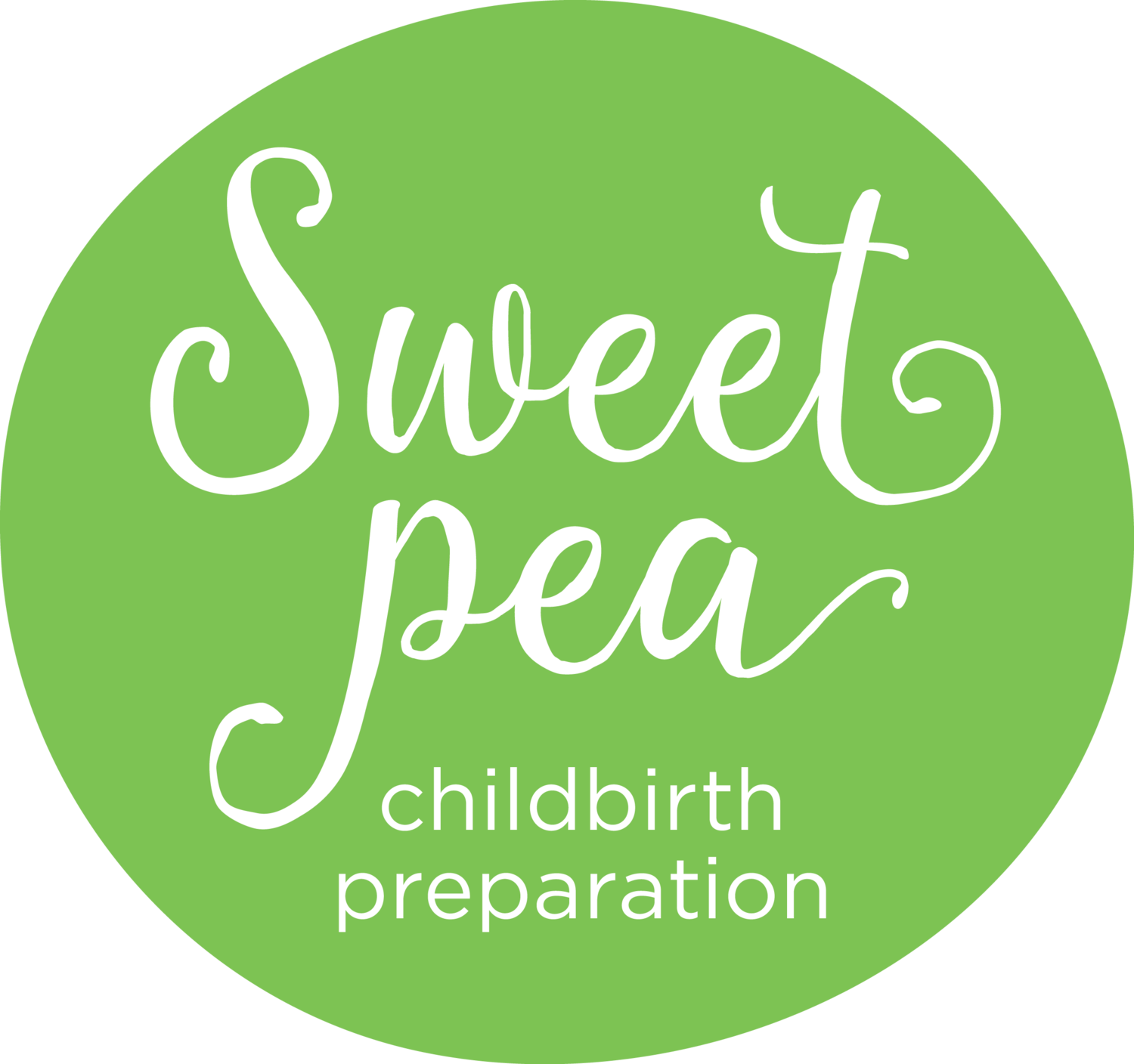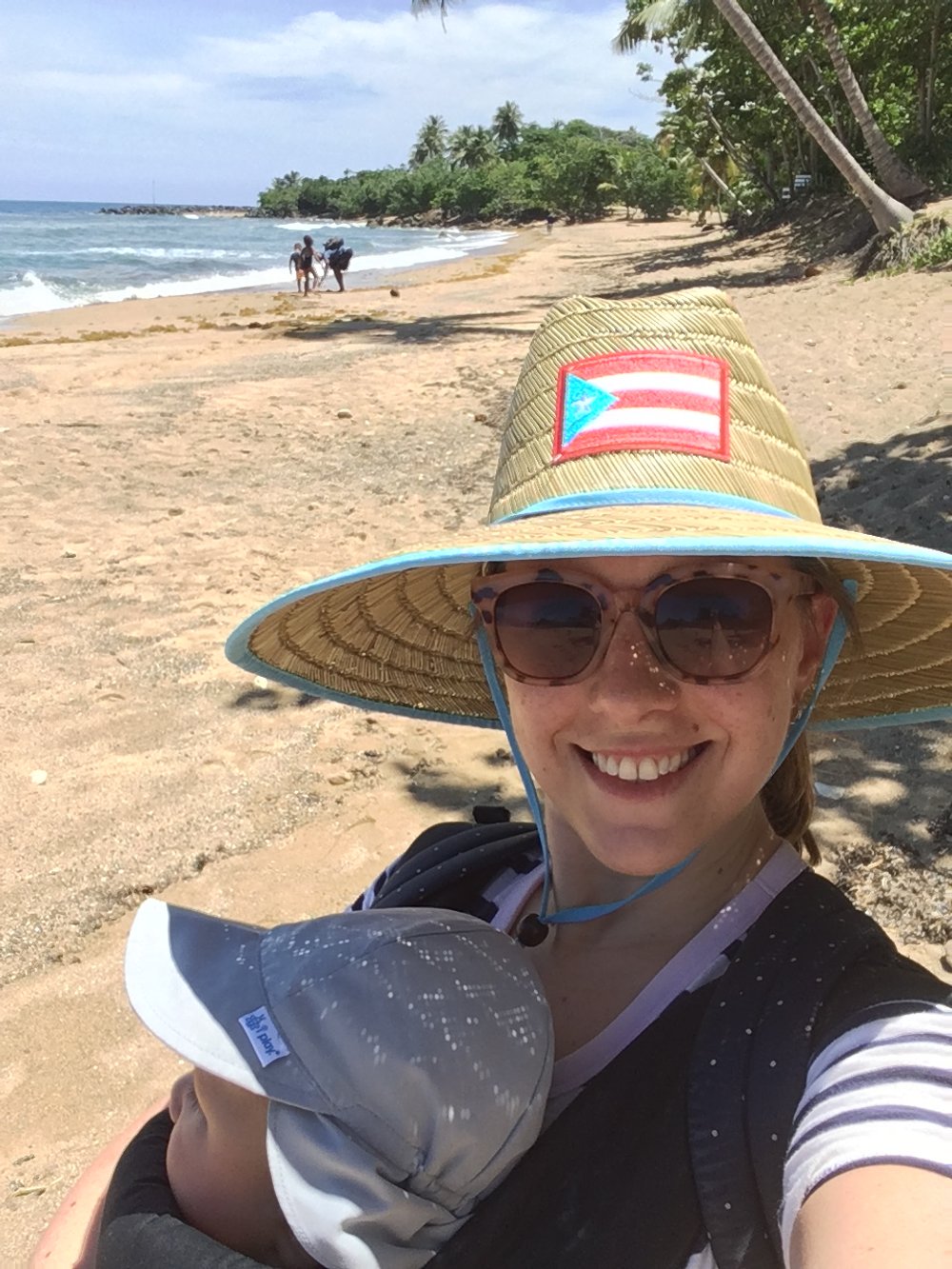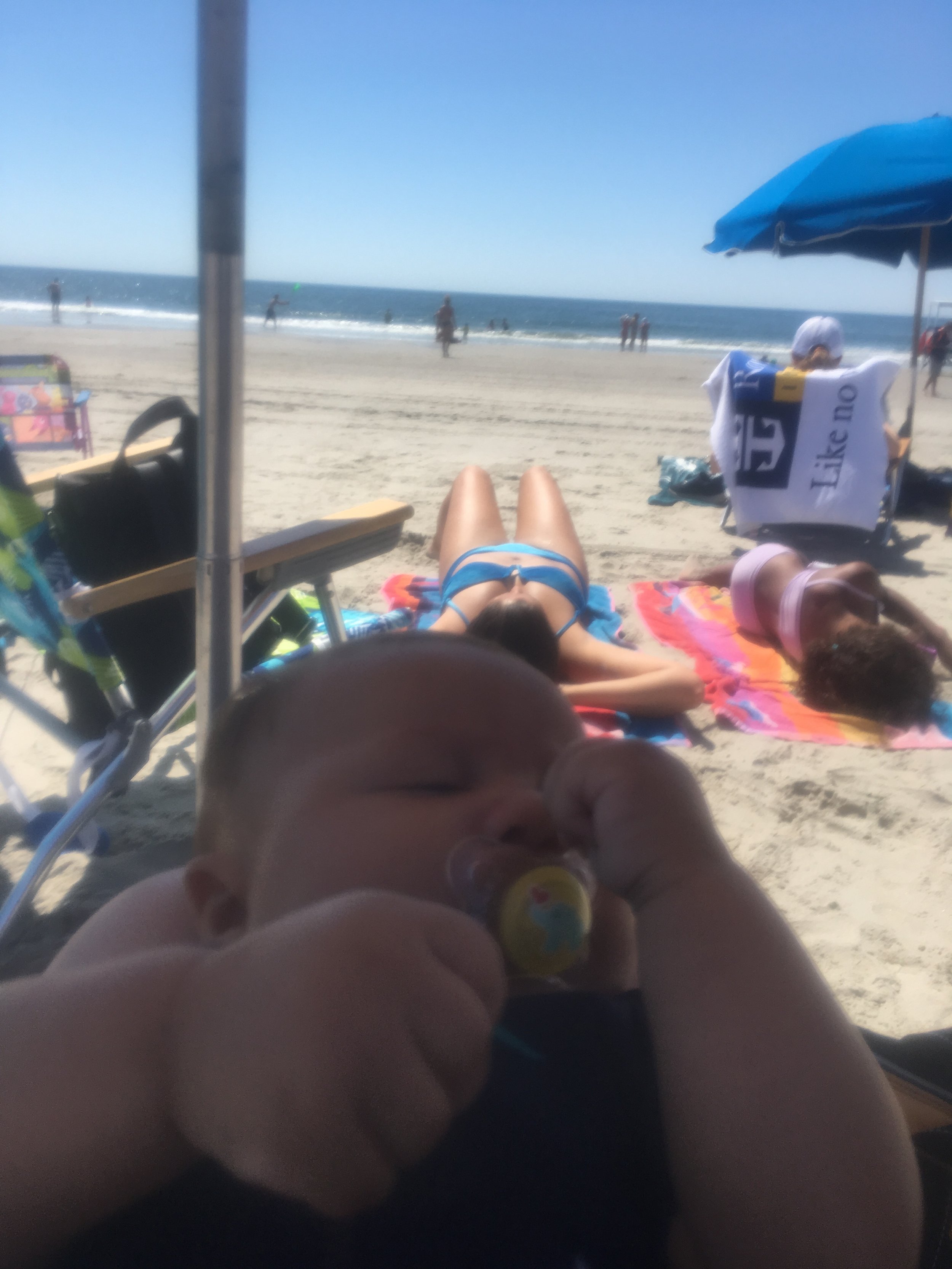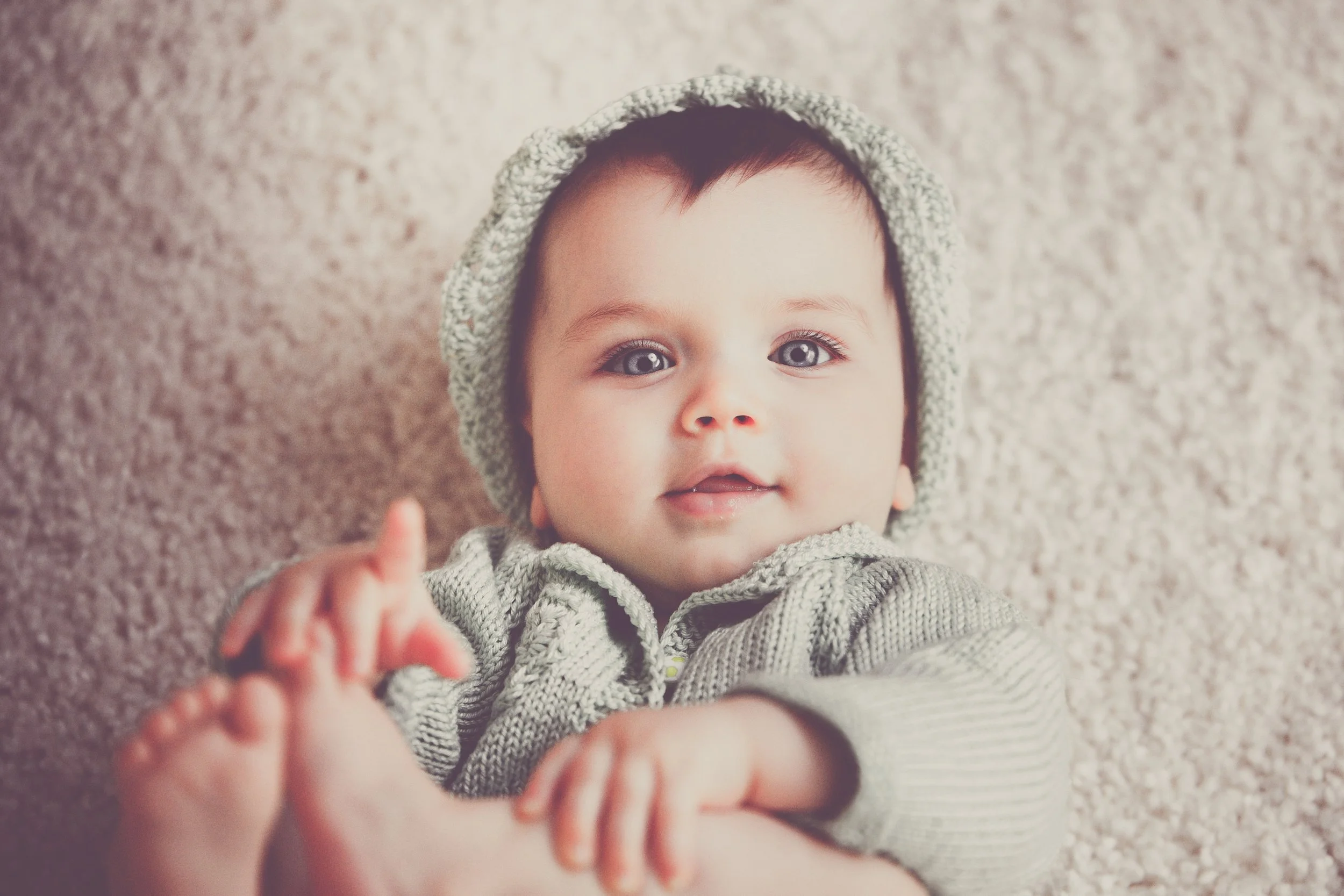When Your Newborn Won't Sleep: Crack The Code on Infant Sleep and Attachment Parenting
/
Infant Sleep Struggles & Strategies is Now Open!: Prevent Postpartum Sadness Through Infant Sleep Education; Gentle sleep training starts here.
Disclaimer: If you have found this blog post as a desperate new parent googling: “my newborn won't sleep” then please know that this one blog post will not get your crying baby to go to sleep. I do however think it’s a great place to start. It is meant to be a jumping off point to help you think about infant sleep differently and a discussion to help you to reevaluate your attachment with your infant. Please involve your pediatrician, and ask for help from your support network if you need a break.
What Is The Deal With Infant Sleep?
Most new parents have a variety of questions as they begin the early care of their new baby but often those questions boil down to a few common themes with one main theme being newborn sleep. “When should I stop feeding at night?” When should I start sleep training?” The list goes on and on. Often pediatricians and other providers are asked these questions as a result of postpartum fatigue from tired parents wondering how to get their child to sleep more. These questions may come from lack of understanding of a normal newborn sleep pattern and even comparisons to peers. The truth is that infants (0-3 months old) wake up. They are developmentally supposed to be stirring every few hours. The reality is that the normal newborn schedule with our current cultural norms and schedules do not match. I remember thinking every 2-3 hours with each night feeding in those early months, “I can do the baby part, it is just the rest of life that I can’t handle right now.” For some people that means round the clock feedings and care of baby while working, for others, it’s keeping up the home or caring for the needs of their other children that can make it all feel a bit too much. Lack of sleep in the early days is even associated with increased rates of maternal depression postpartum. Parenting in the early months has many highs and lows and new parents are warned about the fatigue of infant care. While no one can fully prepare you for what is to come, why is it that some parents seem to have a harder time than others? Understanding the dynamics that exist surrounding infant sleep, outside of the basic knowledge of newborn sleep patterns, will better prepare parents for the transition to newborn care.
The Sleep Emotion Connection
There are many individual elements that affect a baby's sleep patterns such as the baby's health and natural temperament as well as factors that affect a parent's abilities to care for their child such as mental health concerns or lack of support. Every baby and family are unique. In a perfect world though a baby ultimately learns how to self soothe so that they can settle themselves through the repetitive cycles of sleep that are supposed to happen each night we lay down to rest. Some babies are “signalers'' which means that at the end of each cycle the baby is awake and letting you know. Initially babies signal to alert a parent that it’s time to eat but eventually your baby gets big enough that they no longer need to consume calories at night yet still signal. One critical issue at the crux of the infant sleep conundrum is the way in which the attachment between a parent and infant will affect sleep patterns and sleep patterns then affect a parents response. During the transitional months from 3-6 months of life when your baby cries, how you respond matters. They learn each time from your actions how to behave moving forward. It is important to show a baby in the first few months of life that they are secure and safe and that their needs are being met, and this is where it gets tricky. It’s a “what came first the chicken or the egg” situation. If your baby under 6 months old cries because they don’t know how to emotionally self regulate, and how you respond shapes attachment and attachment shapes baby’s emotional self regulation then where do you begin? How can you show a small baby, when they are developmentally ready, that they are able to soothe themself without damaging the bond between parent and child that sets a child up for emotional self regulation in the future.
What Is Infant Attachment And Why Does It Matter?
Attachment related to child development is defined by Mary Ainsworth (1963), a developmental psychologist pioneering the research on attachment theory, as a “secure base from which to explore,” and by John Bowlby (1969/1982), her counterpart, as a unique relationship between an infant and his caregiver that is the foundation for further healthy development. When considering the activities of infants and the length of time they spend eating and sleeping in a 24 hour period one can conclude that a significant portion of the parent infant interactions are centered around vital activities such as eating and sleep. Bowlby described attachment theory as an inherent biological response and behavioral system in place to provide satisfaction of basic human needs. (Flaherty, Sadler, 2012). Few activities could be described as more inherent than the infants need to sleep. Attachment Parenting however is the culturally nuanced style of parenting centered around the Attachment Theory created by John Bowlby and Mary Ainsworth played out in the day to day life of a family. This style of parenting is meant to guide the child toward a secure attachment which will help the child to better self regulate their emotions in the future. The way in which a parent responds to a child surrounding sleep behaviors and challenges affects the infant's response towards the parent and therefore the attachment relationship between the two.
Practice Makes Perfect
The repeated interactions with parents in emotion-laden contexts allow infants to become increasingly able to autonomously use strategies to regulate their emotional arousal. The organization of behaviors within the attachment relationship thus affects how children organize and regulate their emotions and behaviors towards the environment. (Kim, Stifler, Philbrook, Teti, 2014). The parent child bond is developed initially by face to face contact and a sensitive response to the child during caregiving measures such as tending to the infant’s basic needs to be held and fed and kept clean. The parent child bond is maintained by continuing to provide “a level of emotional availability and warm sensitive care.” Let’s delve a bit deeper into how this early attachment relates to sleep and how too much and too little “availability” can lead to sleep challenges.
What It Means To Be “Mom Enough”
Dr. Erickson outlines certain key elements that children need to thrive including 1. A secure base 2. A rich language environment 3. Opportunities for free play and exploration 4. Limits with love and logic 5. Opportunities to contribute (Dr Marti and Erin Erickson, 2016). Check out her write up on being Mom Enough which really sums it all up amazingly. Parents have the opportunity during each interaction with their child to use physical affection, the tone of their voice, and soothing techniques to respond to infant cries in a way that builds attachment. Setting healthy bedtime routines however creates limits with love and logic as described by Dr. Erickson. Using techniques that teach a baby that her mother is both there for him/her but that limits exist and that it is time to go to sleep is the goal. Working to maintain the bond between a parent and child demonstrates a commitment to the importance of early interactions with your child and how they impact and shape your child’s future.
The Goal Is Not To Mom Too Little Or Too Much, But “Mom Enough”
As child development research continues to show, from infancy to adulthood, there are certain key elements children need in order to thrive and grow up well. As summarized below, those are the elements of being “mom enough” (and “dad enough” too!).
1. A secure base
2. A rich language environment
3. Opportunities for free play and exploration
4. Limits with love and logic
5. Opportunities to contribute
(Dr Marti and Erin Erickson, 2016)
Read more from Dr. Ericksons here about why attachment matters
Consider How Sleep Strategies And Sleep Training Affect The Sleep Emotion Cycle
When discussing infant sleep strategies parents are often overwhelmed by the plethora of options and conflicting styles and are often left wondering what is the most effective and right approach for their family. Parents are often presented with a mainstream approach, where parents let the baby “cry it out.” that forces them to choose between responding to their babies cries or getting much needed sleep. The challenge with this approach of leaving your baby to cry until they fall asleep is that this approach is often not sustainable by parents and with inconsistency it can be ineffective or even backfire. Mothers in particular often feel like they are choosing between the wellbeing of their child (responding to their cries) and their own personal wellness and ability to sleep (not responding to the baby’s cries). As parents contemplate their bond with their new baby along with the sleep strategy decision at hand they are left even more confused. Attachment Parenting is often misunderstood as the constant proximity or nearness of a parent to their child or even the constant response to the baby when s/he cries. Instead it is actually the trust that a child has in their parents that their needs will be met. Parents are best to remember that there is no specific set of tasks that will ensure a secure attachment but yet a framework of action that builds the parent child bond. Your behaviors with your child over time will allow your child to learn how to self regulate their emotions.
Infant Sleep Struggles & Strategies
Preventing Postpartum Sadness Through Infant Sleep Education
My Newest Online Course Is Now Enrolling!
Can We Have Sleep And A Secure Attachment? I say YES!
As parents learn about sleep strategies they must consider the unique factors of their specific mother baby pair and the goal for the whole family in the context of the baby's developmental stage. As a sleep consultant training in a sensitive approach I believe that each family can come up with a plan that both encourages healthy sleep habits for the child’s developmental ability and enhances the attachment between parent and baby. Families are allowed to desire not only a more restful night sleep but to also want a secure bond between the parent and child. The way that you guide your baby to sleep is an opportunity to develop and support a secure bond. Parents are often fearful of damaging this connection when they hear their baby cry and deserve tools that allow them to ease towards a balanced solution.
If you are thinking about utilizing a consultant for sleep, a great one will work to foster the connection between a parent and child by helping a parent find their own solution to their sleep concern and by supporting the family as they take the steps necessary to achieve an established goal. A consultant can actively listen to the story of that parent and validate the knowledge and awareness s/he has of her own baby. S/he can then reflect back to the parents an impression of the situation and help the family create a plan that makes sense to them so as to ensure a sustainable solution. Supporting a parent as they move towards their own solution allows the parent to feel confident in their innate skills. They will see in practice that they have the ability to be both emotionally available while also consolidating their infant’s sleep. Providing a plan forward and steps towards consolidated sleep that allow parents to remain in touch with the emotional needs of their baby will ultimately be a more sustainable solution. The combination of a thoughtful plan, a consultant's emotional support centered around active listening, plus education on infant development will ultimately ease a parents mind surrounding their approach to sleep interventions.
Things To Remember:
If you have a bad night with your baby you have not ruined your attachment bond. Bonds are created over time.
Babies can bond with more than one person so it does not always have to be the same person to tend to the baby and if you have the means to get help at night then that is also not harmful to your relationship with your child.
If your baby will not sleep then you should involve your pediatrician to ensure that your baby is healthy before researching sleep strategies.
Check in on sleep expectations for your baby’s age. Sleep training should not be started until at least 4 months old (usually closer to 6 months) and when you know your baby is ok without night feedings. Ask your pediatrician if you are not sure.
Babies typically are not able to self soothe until 6 months of age, so do not expect your baby to go back to sleep without help. Consider however the 5-6 month age as a training ground for self soothing and some babies will get it sooner than others.
Increase Both Your Sleep And Satisfaction As A Parent
Join me in class to learn more about not only the problem but the solutions as well! Check out more about the new Sweet Pea Prep Infant Sleep course focused on improving maternal (and partner) satisfaction through sleep education.
References:
Ainsworth MD. The development of infant-mother interaction among the Ganda. In: Foss BM, editor. Determinants of infant behavior. New York: Wiley; 1963. pp. 67–112. [Google Scholar]
Bowlby J. Attachment and loss: Vol. 1. Attachment. 2. New York: Basic Books; 1969/1982. [Google Scholar]
Erin & Marti Erickson, 2016 Mom enough https://momenough.com/?page_id=63
Flaherty SC, Sadler LS. A review of attachment theory in the context of adolescent parenting. J Pediatr Health Care. 2011 Mar-Apr;25(2):114-21. doi: 10.1016/j.pedhc.2010.02.005. Epub 2010 May 1. PMID: 21320683; PMCID: PMC3051370.
Kim BR, Stifter CA, Philbrook LE, Teti DM. Infant emotion regulation: relations to bedtime emotional availability, attachment security, and temperament. Infant Behav Dev. 2014 Nov;37(4):480-90. doi: 10.1016/j.infbeh.2014.06.006. Epub 2014 Jul 2. PMID: 24995668; PMCID: PMC4262588.



























